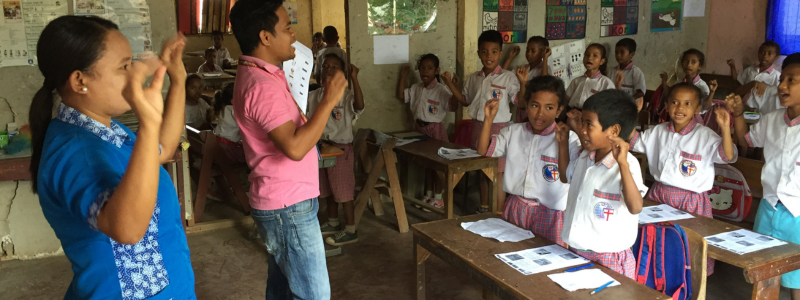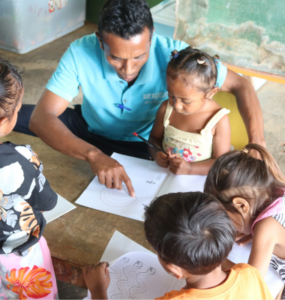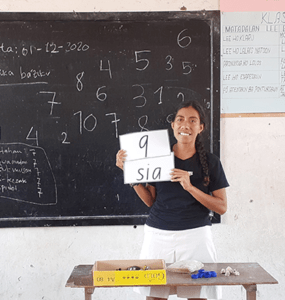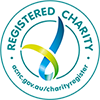
- Population: 1.3 million
- Timor-Leste has a very young population with the median age being 20.8 years and 74% of the population is under 35
- As at 2018, Timor-Leste has a 68.1% literacy rate, an increase from 37.6% in 2001
- Timor-Leste is ranked 132 of 189 countries on the Human Development Index
- More than 45% of the population are living in poverty, the highest number in Southeast Asia
- Tetun and Portuguese are the two official languages of Timor-Leste, however Indonesian and English are also used as working languages
How ‘Learning for Life’ began in Timor-Leste
Saint Mary MacKillop was a teacher who understood the importance of education as a pathway out of poverty. She was especially committed to reaching people living in the remote areas of Australia with access to education.
When Bishop Carlos Belo requested the Sisters of Saint Joseph help with education in Timor-Leste during the Indonesian occupation, they, like Mary MacKillop, answered the call because they knew the incredible power of quality education to transform lives for those most vulnerable and excluded.
The Sisters set out to continue Mary’s legacy of providing access to education in Timor-Leste.
Now, 30 years later, the work of the Sisters has expanded to reach a variety of community needs through Mary MacKillop Today’s range of Learning for Life programs.
Through our delivery of education programs, we know that education is a proven way to break the cycle of poverty and there is still so much crucial work to be done in Timor-Leste.
Mary MacKillop Today’s Learning for Life programs in Timor-Leste
Teacher Training Project: You can provide teachers with the skills they need to delivery quality education to children. In the villages we work with, many of the teachers don’t receive much training. Our Teacher Training Program is a way to support teachers in their own language.
Parents Training Program: You can help parents support their children’s education at home. Mothers, fathers, and carers who participate in our training come away with a newfound confidence to get involved in their children’s education. They learn techniques to encourage literacy in the home and see the joy of their children’s learning.
 Inclusive Early Education: You can reach school communities in the most remote areas. Our Mobile Learning Centre is a colourful bus visiting some of the most disadvantaged schools in the country – filled with creative learning activities that are also culturally appropriate and in the local language, Tetun.
Inclusive Early Education: You can reach school communities in the most remote areas. Our Mobile Learning Centre is a colourful bus visiting some of the most disadvantaged schools in the country – filled with creative learning activities that are also culturally appropriate and in the local language, Tetun.
Health Literacy Program: Our Health Literacy Program aims to deliver life-saving health resources to communities. We provide health posters and books to teach children, families, and teachers how to improve hygiene and prevent disease. These resources cover important topics such as handwashing, healthy eating, protection from mosquitos, and drinking clean water.
Cooperative BEHAFU Project: You can set people up with livelihood skills to support their families into the future. Through a series of ongoing workshops, we provide people with opportunities to learn practical skills so they can earn an income and support their households.
Why Timor-Leste?
Timor-Leste is one of Australia’s closest neighbours, yet the country is very poor with 42% of the population living below the poverty line. People living in rural and remote areas are especially vulnerable to poverty and exclusion.
The focus of Mary MacKillop Today in Timor-Leste has been on education, as it is a proven way to break the cycle of entrenched poverty. This is why Mary MacKillop Today has been in Timor-Leste for more than 30 years, since the Sisters of St Joseph first began their courageous work during the violence of the Indonesian occupation.
With your support, we remain committed to delivering Learning for Life programs to the most marginalised communities in the hardest to reach areas.
 Why your support is needed
Why your support is needed
We see the transformative impact of education across Timor-Leste every day through the communities we work with.
And it’s only possible with the generosity of supporters like you.
Without the support of kind-hearted people like you, the communities who depend on us for education will have nowhere else to turn – and may face plunging deeper into a life of poverty for generations to come.
The impact you can have via Mary MacKillop Today
For every additional year spent in school, there is an increase in a person’s potential earnings of around 10-20%. This increase in household income can lift whole families and communities out of poverty and lead to healthier lives for people in Timor-Leste.
Thank you for your generosity and compassion for our neighbouring nation. Your support will make a life-changing difference for children, families, teachers, schools, and entire communities.
Source:








